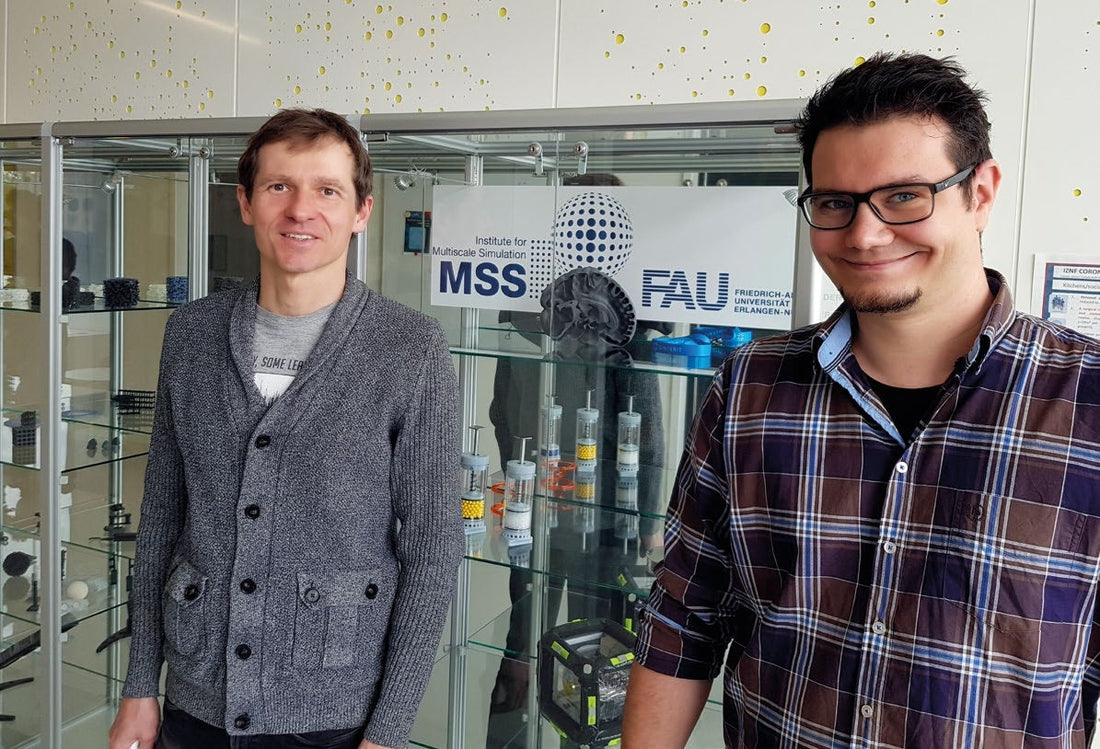Institute for Multiscale Simulation - Printing accurate and durable phantom to mimic human organs

Customer: Walter Pucheanu, Institute for Multiscale Simulation
Country: Germany
Industry: Healthcare / Medical, Research, Education
Application: Phantoms for computed tomography
Uses: Accuracy, Complexity, Material Variety, Wall Thickness, Water Tightness
Top reasons: High spatial resolution, ability to print unsupported overhangs, improved quality

Background
The Institute for Multiscale Simulation (MSS) was established in 2009 and, as a part of the Department of Chemical and Biological Engineering (CBI) of the FAU, contributes to the teaching and research programs of the Department. It complements the CBI in the vital field of multiscale numerical simulation techniques - the main research focus of the institute.
Another focal point is experimental research on the dynamics of granulates. Around one hundred students learn different 3D printing processes every year in
Dr. Patric Müller’s courses. This knowledge is practically consolidated in an internship. Here, students can realize their own ideas. Research projects are regularly financed through third-party funds or collaborations with
the industry or the public sector.
MSS has also conducted research collaborations
with partners from medical imaging.
One research focus is on phantoms mimicking the appearance of a typical patient’s brain in certain medical imaging modalities, as described
in the following.
Problem
The Institute for Multiscale Simulation (MSS) was established in 2009 and, as a part of the Department of Chemical and Biological Engineering (CBI) of the FAU, contributes to the teaching and research programs of the Department. It complements the CBI in the vital field of multiscale numerical simulation techniques - the main research focus of the institute.
Another focal point is experimental research on the dynamics of granulates. Around one hundred students learn different 3D printing processes every year in Dr. Patric Müller’s courses. This knowledge is practically consolidated in an internship. Here, students can realize their own ideas. Research projects are regularly financed through third-party funds or collaborations with the industry or the public sector. MSS has also conducted research collaborations with partners from medical imaging.
One research focus is on phantoms mimicking the appearance of a typical patient’s brain in certain medical imaging modalities, as described in the following.
Solution
Equipment used: Sinterit Lisa PRO 3D Printer
Material used: PA12
Because the Institute of Multiscale Simulation wanted to print freely in space without having to support overhangs, they opted for the SLS process. After researching the market, the solution was to purchase a Sinterit printer. Lisa PRO allows them to print accurate and durable phantoms mimicking human organs. Furthermore, the high spatial resolution was well suited for the delicate structures of such phantoms.
The SLS process improved print quality and reliability, over the previously used FDM approach and resulted in highly detailed prints. The human brain phantom was printed in two halves, so that the remaining powder could easily be removed from the non-visible areas. After that, the halves were glued together.
For the actual measurements, the phantom needs to be filled with a radioactive liquid. To make the filling possible, they coated the outer shell with an epoxy resin. To bypass the process of covering the printouts with resin, Walter Pucheanu will start printing with polypropylene, a powder that does not absorb liquids.
“The print quality of the Lisa PRO is impressive.”

